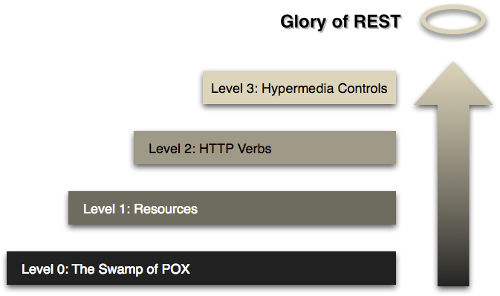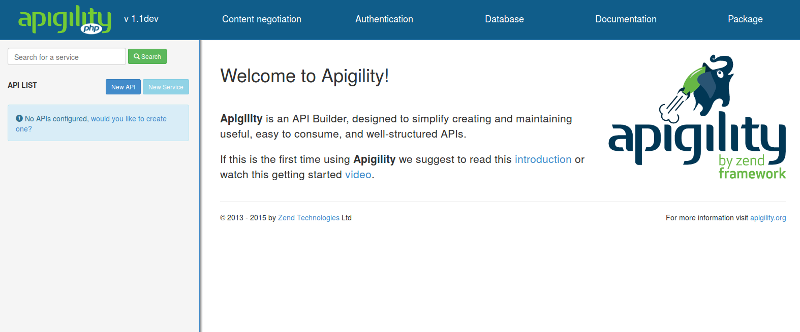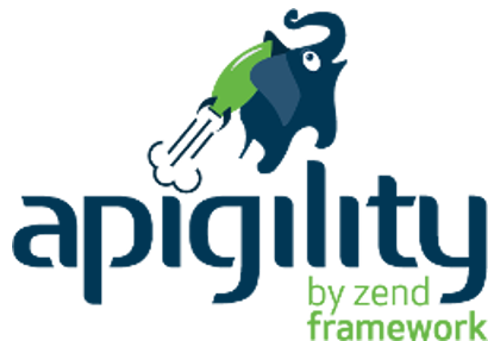Develop and design RESTful web API in PHP using Apigility
by Enrico Zimuel - Twitter: @ezimuel
Senior Sofware Engineer, Zend Technologies Ltd
28th March - Rome (Italy)
About me
 Professional Developer since 1996. Senior Software Engineer at Zend Technologies, since 2008. Research in computer science at the Informatics Institute of Amsterdam University. Open source contributor and co-author of Apigility and Zend Framework. Co-author of the Italian books PHP Best Practices and Javascript Best Practices. Co-founder of PUG Torino (Italy).
Professional Developer since 1996. Senior Software Engineer at Zend Technologies, since 2008. Research in computer science at the Informatics Institute of Amsterdam University. Open source contributor and co-author of Apigility and Zend Framework. Co-author of the Italian books PHP Best Practices and Javascript Best Practices. Co-founder of PUG Torino (Italy).
API
API stands for "Application Programming Interface" and as a term, specifies how software should interact.
When we refer to APIs today, we are referring more specifically to web APIs, those delivered over HyperText Transfer Protocol (HTTP).
REST
REpresentational State Transfer (REST) is an architecture designed around the HTTP specification.
Glory of REST
Talking about REST, the Richardson Maturity Model is often used to describe the concerns necessary when implementing a well-designed REST API

REST: Level 0
The usage of HTTP as communication layer
A format for data representation (e.g. JSON)
Basically a Remote Procedure Call (RPC)
REST: Level 1
URIs as unique identifiers for resources
For instance, the resource User can be identified by
http://domain/api/user[/:user_id]where user_id is an optional parameter
REST: Level 2
Usage of HTTP verbs for operations on resources
| CRUD | HTTP verbs |
| CREATE | POST |
| READ | GET |
| UPDATE | PUT, PATCH* |
| DELETE | DELETE |
* partial update
REST: Level 3
Linking between resources to indicate relationships (hypermedia)
GET /api/user/ezimuel
{
"_links": {
"self": {
"href": "http://domain/api/user/ezimuel"
},
"contacts": [
{ "href": "http://domain/api/user/mwop" },
{ "href": "http://domain/api/user/zeevs" }
]
},
"id": "ezimuel",
"name": "Enrico Zimuel"
}
JSON-HAL format
HATEOAS
Hypermedia As The Engine Of Application State
Advantages of REST
Scalable architecture
Very easy to consume
Reduce client/server coupling
Discoverability
REST in PHP
$data = array(
'id' => 'ezimuel',
'name' => 'Enrico Zimuel'
);
header('Content-Type: application/json');
echo json_encode($data);
Quite simple, right?
No! What about error handling, hypermedia, data validation, content negotiation, versioning, etc?
RESTful in practice?
Can be difficult, especially at the beginning

Issue
- Which representation format to use?
- How to handle error messages?
- How to support authentication?
- How to support hypermedia?
- How to generate API documentation?
Possible answers
- Which representation format to use? JSON
- How to handle error messages? application/problem+json
- How to support authentication? OAuth2
- How to support hypermedia? JSON HAL
- How to generate API documentation? HTML, Swagger
Apigility
- The API builder for PHP applications
- Supports any PHP application!
- Open source project by Zend Technologies
- Built using AngularJS and Zend Framework 2
- Last version is 1.0.4 (1.1 coming soon!)
- Official website apigility.org
Main features
- RPC and REST
- JSON (HAL) as default format
- Error handling (API Problem)
- Content negotiation
- Versioning (via URI and Accept header)
- Filtering and validation
- Authentication (HTTP Basic/Digest, OAuth2)
- Interactive documentation (HTML, Swagger)
JSON HAL
- JSON Hypertext Application Language, is a RFC draft proposal (draft-kelly-json-hal-06)
- Example:
GET /api/user/ezimuel { "_links": { "self": { "href": "http://domain/api/user/ezimuel" } } "id": "ezimuel", "name": "Enrico Zimuel" }
_embedded
{
"_links": {
"self": {
"href": "http://domain/api/user/ezimuel"
}
}
"id": "ezimuel",
"name": "Enrico Zimuel",
"_embedded": {
"contacts": [
{
"_links": {
"self": {
"href": "http://domain/api/user/mwop"
}
},
"id": "mwop",
"name": "Matthew Weier O'Phinney"
},
{
"_links": {
"self": {
"href": "http://domain/api/user/zeevs"
}
},
"id": "zeevs",
"name": "Zeev Suraski"
}
]
}
}
Collections
{
"_links": {
"self": {
"href": "http://domain/api/user?page=3"
},
"first": {
"href": "http://domain/api/user"
},
"prev": {
"href": "http://domain/api/user?page=2"
},
"next": {
"href": "http://domain/api/user?page=4"
},
"last": {
"href": "http://domain/api/user?page=133"
}
}
"count": 3,
"total": 498,
"_embedded": {
"users": [
{
"_links": {
"self": {
"href": "http://domain/api/user/mwop"
}
},
"id": "mwop",
"name": "Matthew Weier O'Phinney"
},
{
"_links": {
"self": {
"href": "http://domain/api/user/mac_nibblet"
}
},
"id": "mac_nibblet",
"name": "Antoine Hedgecock"
},
{
"_links": {
"self": {
"href": "http://domain/api/user/spiffyjr"
}
},
"id": "spiffyjr",
"name": "Kyle Spraggs"
}
]
}
}
API Problem
- API Problem is a RFC draft proposal (draft-ietf-appsawg-http-problem-00)
- Example:
Content-Type: application/problem+json { "detail": "The GET method has not been defined for individual", "status": 405, "title": "Method Not Allowed", "type": "http://www.w3.org/Protocols/rfc2616/rfc2616-sec10.html" }
Content negotiation
- Content negotiation is a mechanism defined in the HTTP specification that makes it possible to serve different versions of a document at the same URI.
- Example:
Accept: application/hal+json, application/json
API Versioning
Agility uses two approaches:
- In the URL, e.g. /api/
v1/user - By Accept header, e.g. Accept:application/vnd.example.
v1+json
Authentication
Apigility supports three different authentication systems: HTTP Basic, HTTP Digest, and OAuth2
Installation
Super easy, just one command:
curl -sS https://apigility.org/install | php
Or, if you don't have CURL installed:
php -r "readfile('https://apigility.org/install');" | php
Apigility UI
Open the browser to http://localhost:8888

Preview of the new UI of Apigility 1.1
Some resource
- Roy Thomas Fielding, Representational State Transfer (REST), Phd Thesis, 2000
- L. Richardson, M. Amundsen, RESTful Web APIs, O'Reilly 2013
- J. Webber, S. Parastatidis, I. Robinson, REST in Practice, O'Reilly 2010
- Subbu Allamaraju, RESTful Web Services Cookbook, O'Reilly 2010
- Phil Sturgeon, Build APIs You Won't Hate, LeanPub 2014
- Lorna Jane Mitchell, PHP Web Services , O'Reilly 2013
- Joshua Thijssen, The RESTful CookBook, website 2012
- Rob Allen, Create a RESTful API with Apigility, techPortal
- Enrico Zimuel, Create API for existing PHP project using Apigility, spaghetti.io
- Enrico Zimuel, Building RESTful APIs with Apigility, Zend's webinar
Thanks!
Rate this talk: https://joind.in/14149
More information on apigility.org
Contact me: enrico [at] zend.com
Follow me: @ezimuel

This work is licensed under a
Creative Commons Attribution-ShareAlike 3.0 Unported License.
I used reveal.js to make this presentation.

